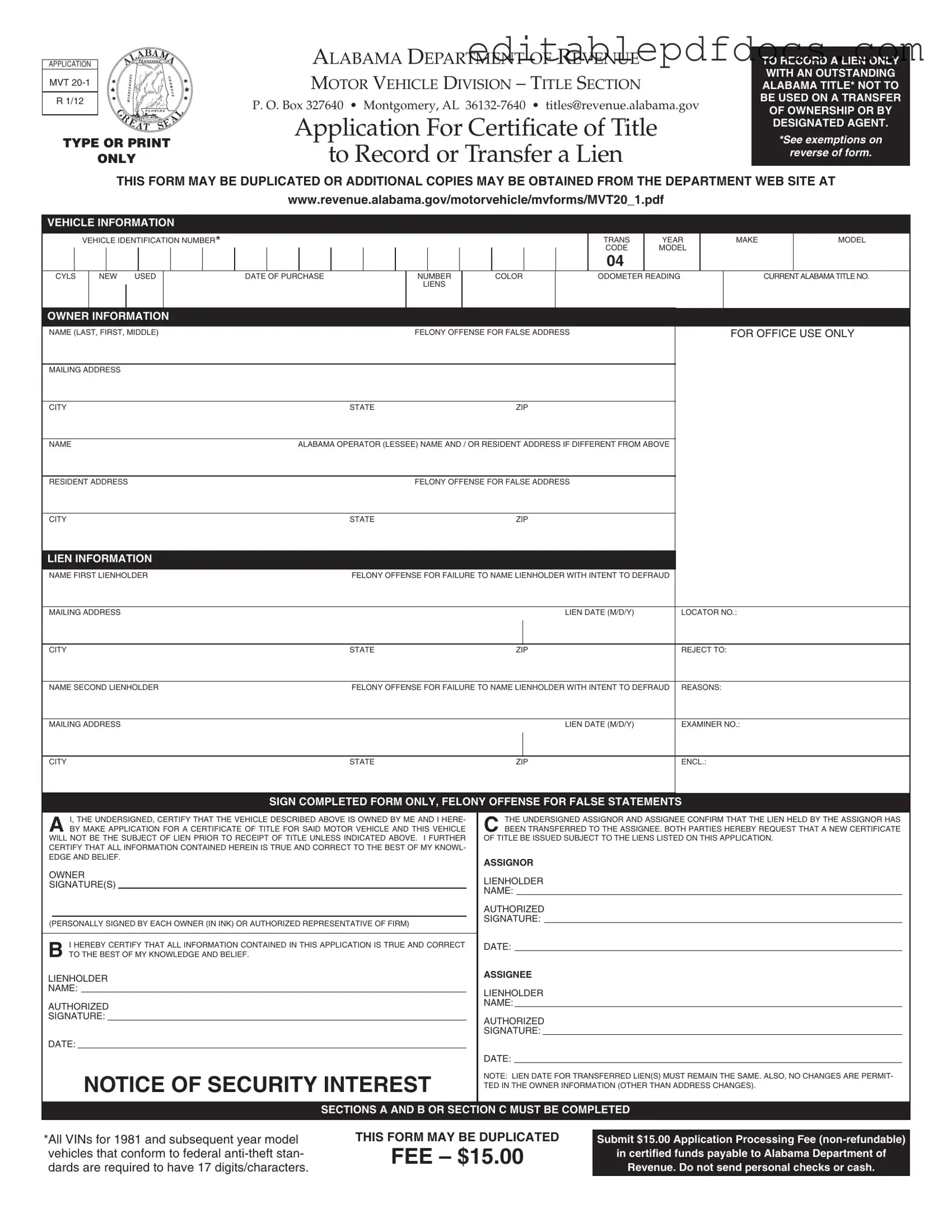Completing the Alabama MVT 20 1 form can be straightforward, but many individuals make critical mistakes that can delay processing. One common error is failing to provide a complete Vehicle Identification Number (VIN). The VIN must be exactly 17 characters for vehicles from 1981 onward. If the VIN is incorrect or incomplete, the application will be rejected.
Another frequent mistake involves the vehicle information section. Applicants often overlook the requirement that the vehicle information must match the details on the current Alabama title. Discrepancies can lead to unnecessary complications. Ensure that the make, model, and year of the vehicle are accurately reflected.
Many people also neglect to check the odometer reading. This reading must be reported accurately. Misstating the odometer can result in legal repercussions and complications in the title transfer process. It’s essential to record this information carefully.
In the owner information section, individuals sometimes fail to include all required names. If there are multiple owners, each must be listed. Omitting an owner can lead to delays or rejection of the application. Clarity is crucial in this section.
Another mistake involves the mailing address. Applicants often provide an address that does not match the one on the current title. If the address differs, it can create confusion and lead to further inquiries from the Department of Revenue.
People also frequently forget to sign the form. The application must be signed by all owners or authorized representatives. A missing signature will result in automatic rejection. Therefore, double-check that all required signatures are present.
Submitting the application without the required fee is another common error. The fee must be $15 in certified funds, and personal checks or cash are not accepted. Applications lacking the correct payment will not be processed.
Additionally, applicants often fail to include supporting documents. The current Alabama title must accompany the application. Without this document, the application cannot proceed, causing unnecessary delays.
Some individuals mistakenly believe that they can make changes to the owner information after submitting the form. However, changes are not permitted, except for address updates. This misunderstanding can lead to further complications and delays.
Finally, people sometimes do not read the instructions thoroughly. The form explicitly states that it should be typed or printed legibly. Illegible forms will be returned, wasting time and effort. Taking the time to read the instructions can save significant hassle.
